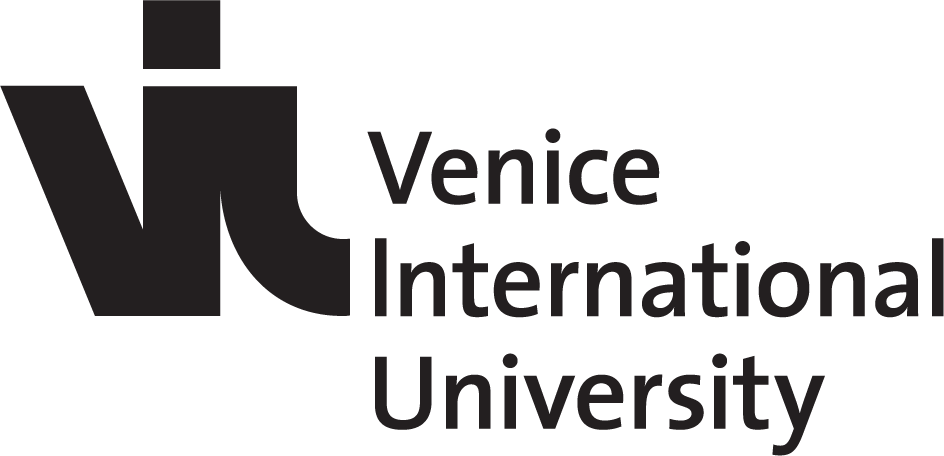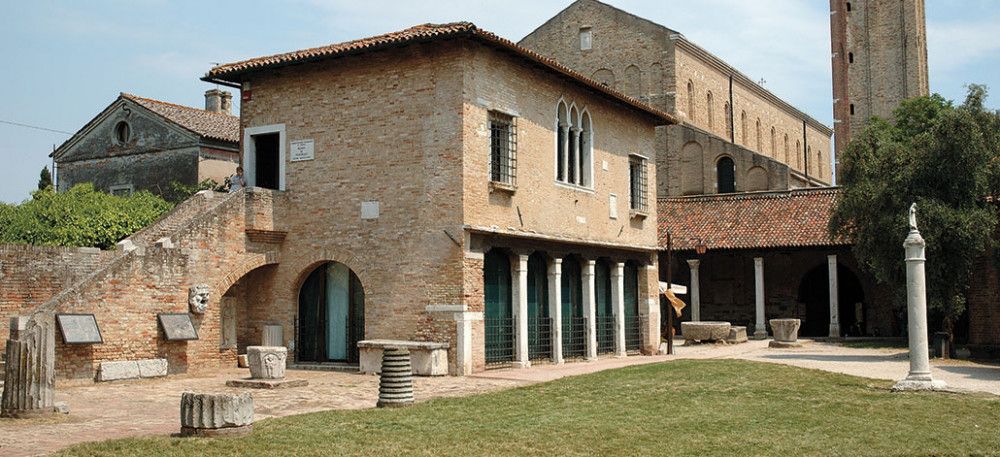
Torcello
Museum
Torcello Museum
Last news
Eventi
Giornate Eureopee del Patrimonio a Torcello
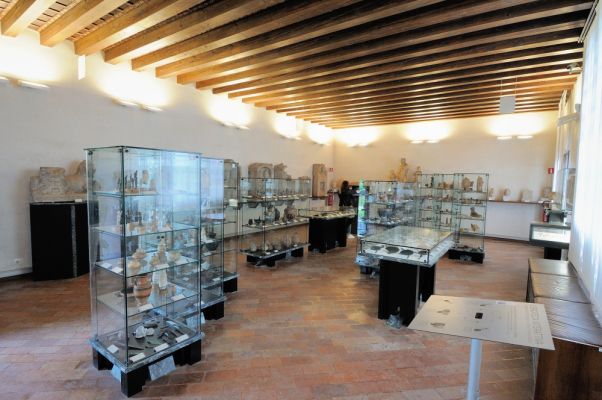
Exhibition Hall, overview
Archaeological Section
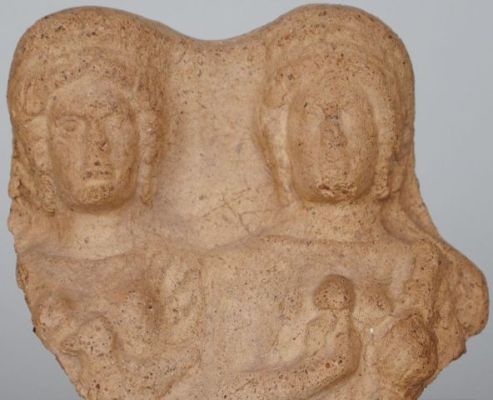
Pair of enthroned female figures Demeter and Kore (fragmentary), 4th century B.C.
Archaeological Section
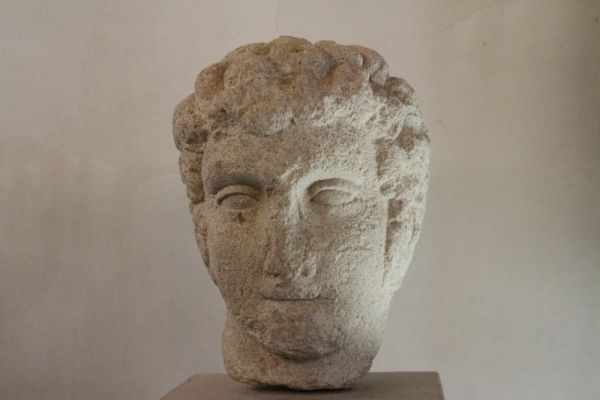
Portrait of a young man with thick curly hair (youthful portrait of Marcus Aurelius?), mid-second century AD
Archaeological Section
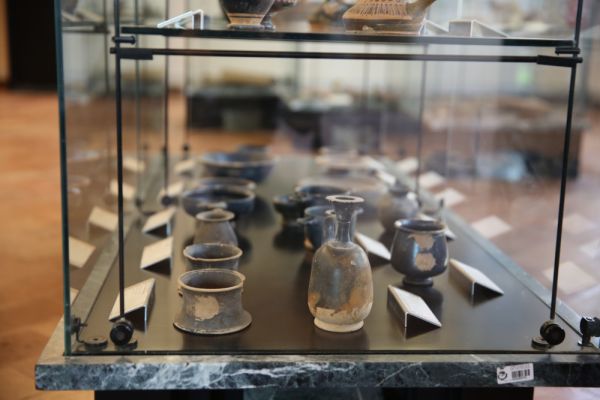
Greek pottery and black glaze
Showcase n. 3, Archaeological Section
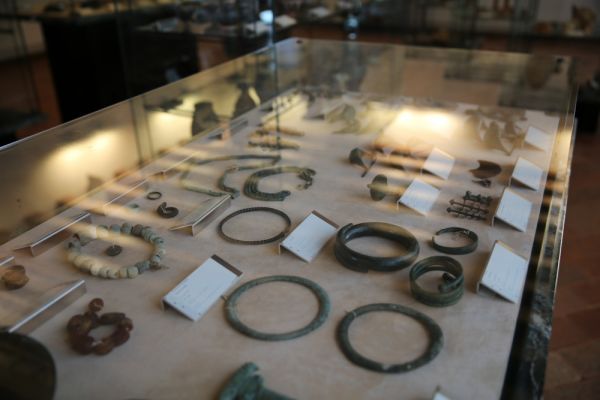
Protohistoric bronzes: armilla (bracelets) and necklaces
Showcase n. 5, Archaeological Section
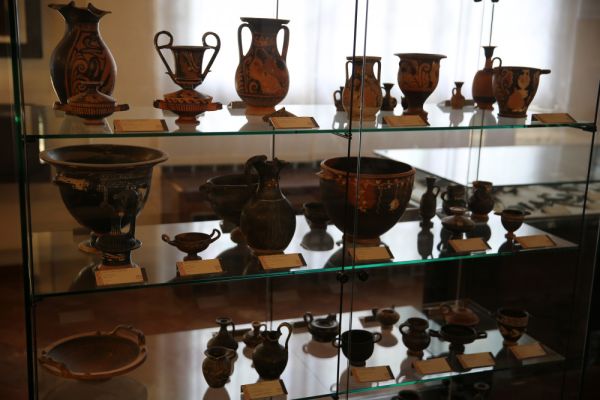
Apulian vases and Campanian red-figure vases, late 4th-early 3rd Century BC
Showcase n. 6, Archaeological Section
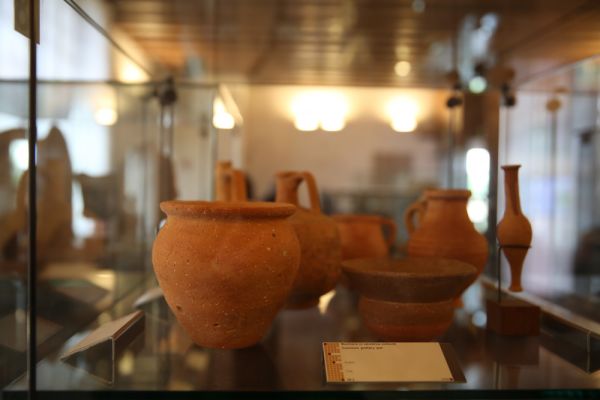
Roman common pottery: olla and glass
Showcase n.8, Archaeological Section
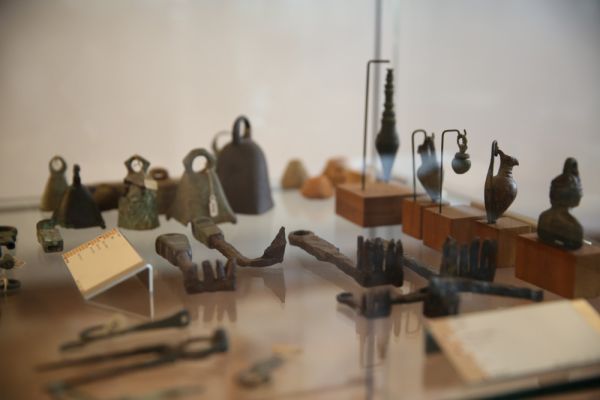
Roman iron keys
Showcase n. 9, Archaeological Section
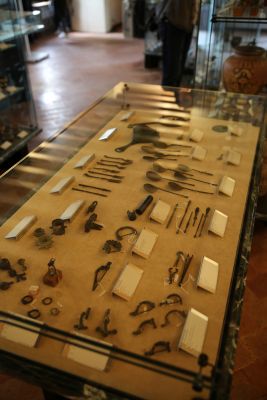
Roman bronzes: amulets, fibulae, small tools, tableware
Showcase n.10, Archaeological Section
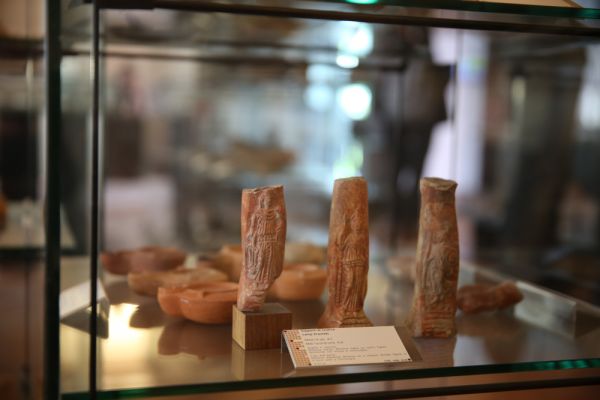
Oil lamp stands decorated with female figures in relief, mid 1st-2nd century AD
Archaeological Section
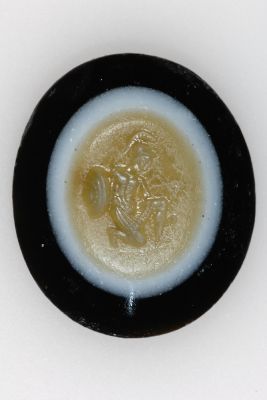
Carved agate with kneeling warrior with armor and shield, 2nd-1st century BC. Probably used as a seal
Archaeological Section
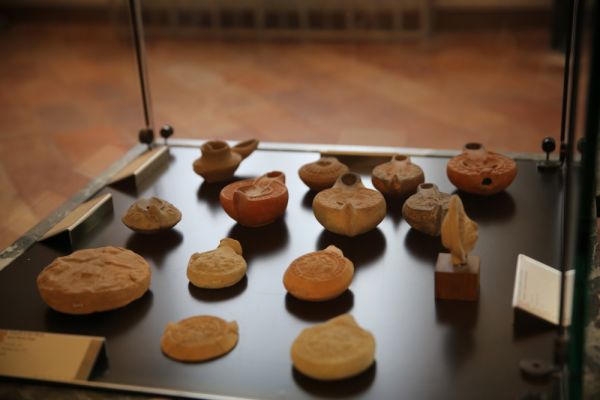
African oil lamps VI century AD and ampullae of San Menas V-VI century AD
Archaeological Section
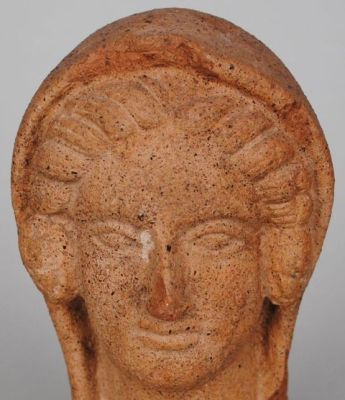
Veiled female head in terracotta, III-II century B.C.
Archaeological Section
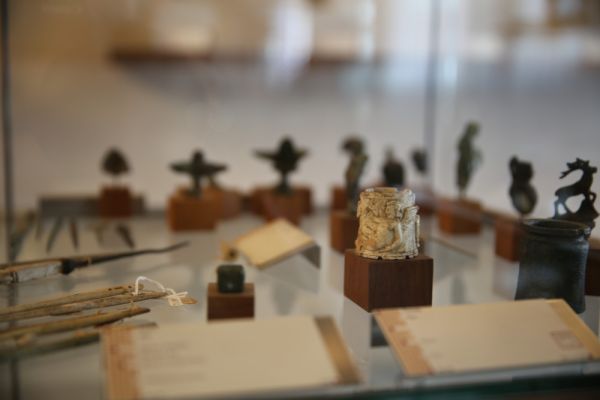
Ivory pyx depicting two cupids placed back to back
Archaeological Section
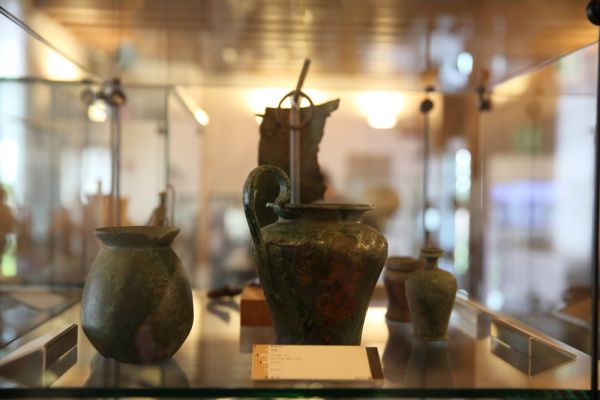
Roman bronzes: jug I-II century AD and glass
Archaeological Section
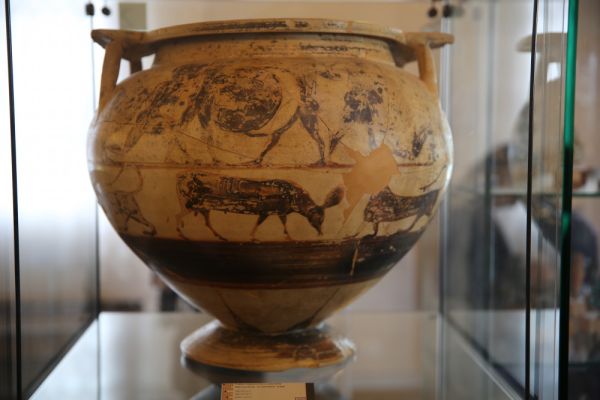
Mesocorinthian krater vase with columns with battle scenes between warriors armed with spear and shield and animals in the lower band, 590 - 575 BC
Archaeological Section
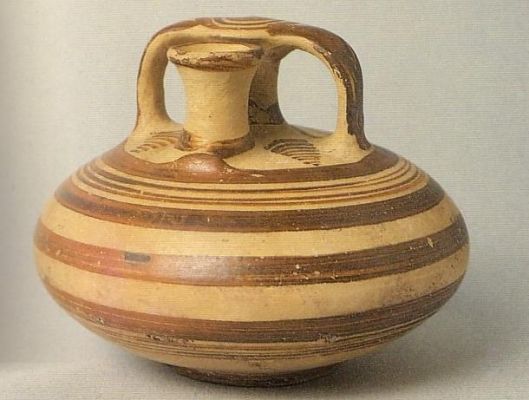
Mycenaean amphora with stirrup handle 1300-1230 B.C.
Archaeological Section
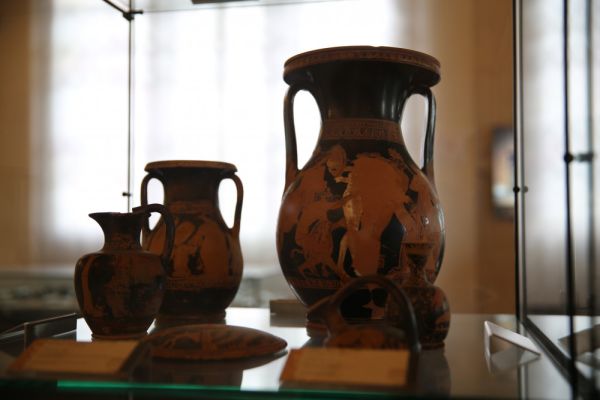
Attic red-figure vases: two Pelike and pyxis lid, late 5th-mid 4th century BC.
Archaeological Section
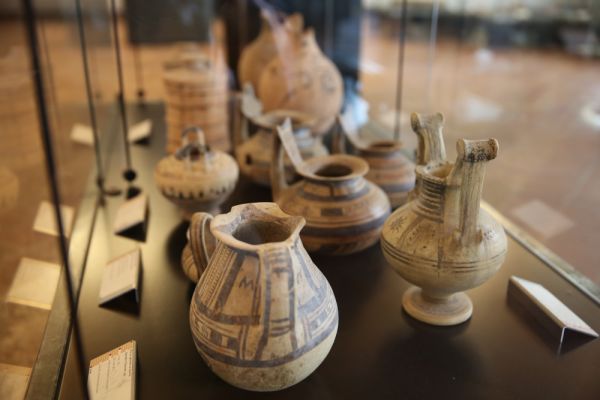
Apulian vases of geometric style: jug, late 4th century BC and trozzella, late 4th-early 3rd century BC
Archaeological Section
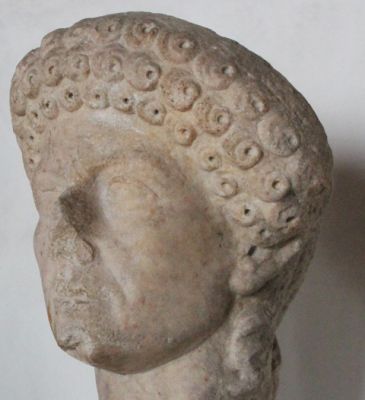
Head female portrait with hairstyle of three rows of spiral curls, 1st century AD Roman sculpture
Archaeological Section
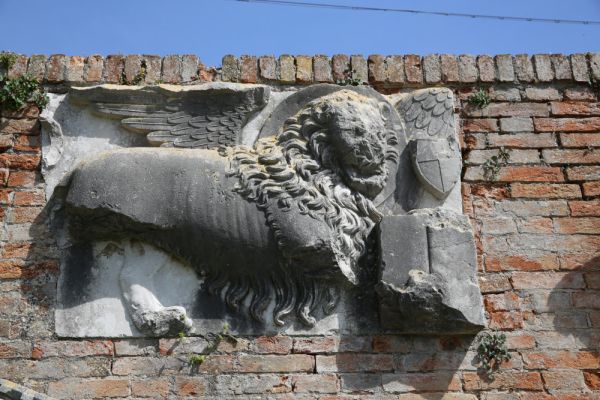
Lion of St. Mark with the coat of arms of the House of Calbo, 15th century (?)
Exterior on the back wall between the Archives building and the Council building
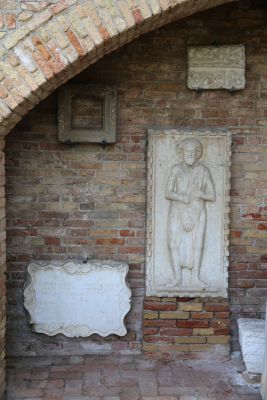
Saint Bartholomew, bas-relief of the 15th C.
Exterior of the room under the stairs of the Palazzo dell'Archivio
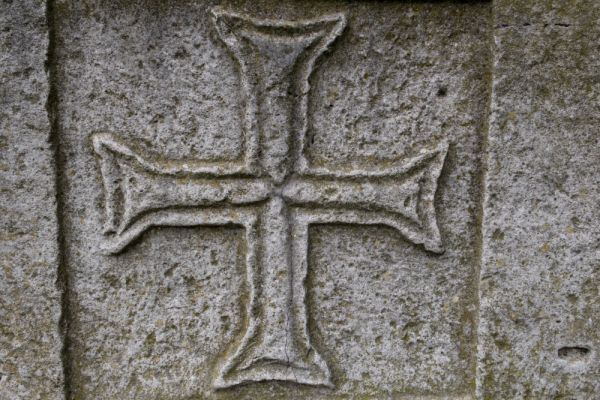
Cubic marble well, 8th century, detail of the carved motif on the four sides: Greek cross with expanded ends
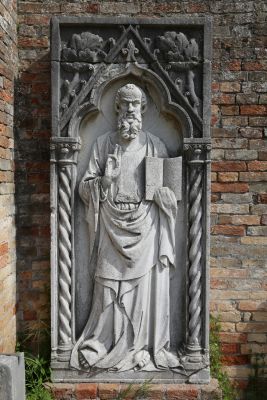
Saint John the Evangelist, high relief end of the 14th century (?), from the facade of the church of the same name in Torcello
Exterior, at the foot of the stairs of the Archives building
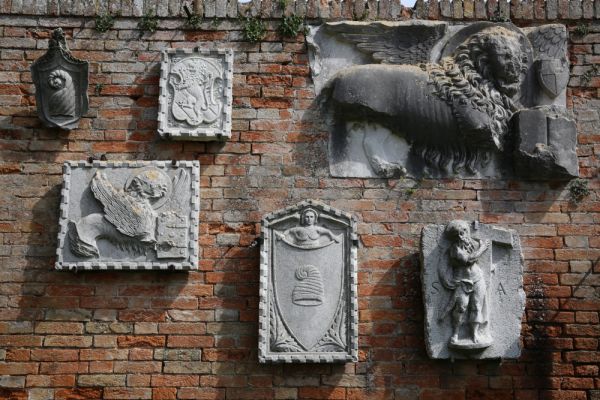
Coats of arms of Venetian families, Marcian lions and Sant'Andrea
Exterior on the back wall between the Palazzo dell'Archivio and the Palazzo del Consiglio
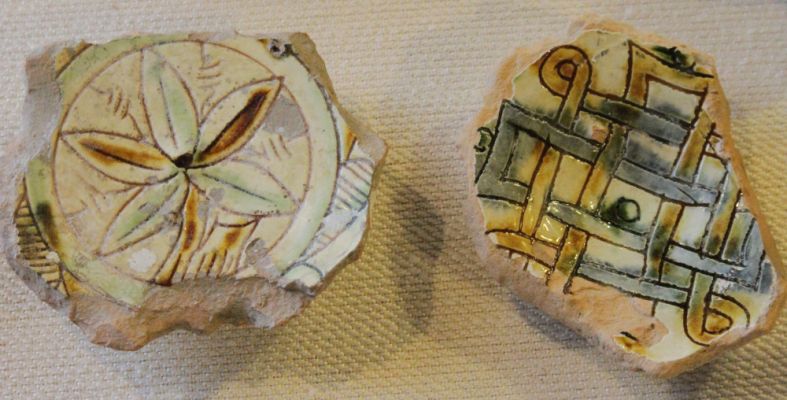
Bowls (fragment of foot with basin) in engobe slipped and scratched ceramic, Venetian production 16th C.
Medieval and Modern Section
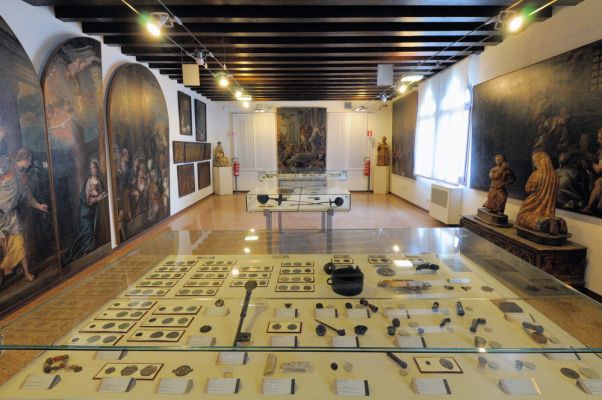
Upper room showcase with relics from Torcello, leaden bubbles, seals
Medieval and Modern Section
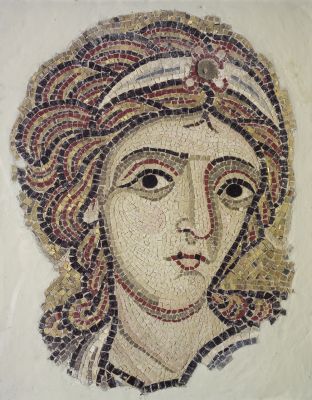
Head of an angel, fragment of mosaic from the apse area of the Torcello Basilica, late 12th C.
Medieval and Modern Section
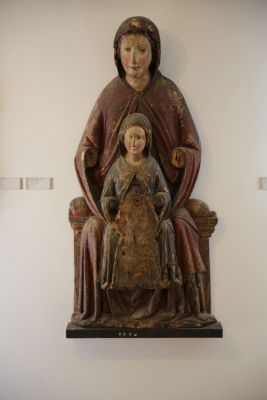
Saint Anne Enthroned with the Virgin, wooden sculpture second half of the XIV century (?)
Medieval and Modern Section
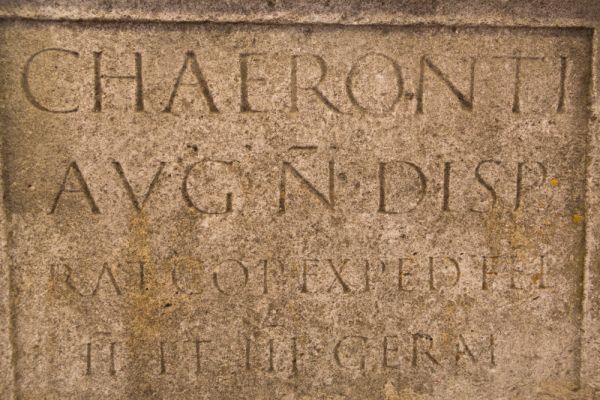
Roman honorary base with inscription, adapted to a well and decorated with griffins on the opposite side in the X century
Medieval and Modern Section
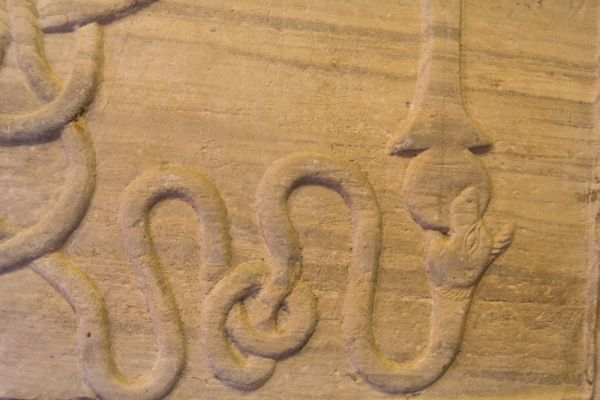
Detail of a fragment of a pluteo with a thin ribbon (lemniscus) ending in an animal head
Medieval and Modern Section
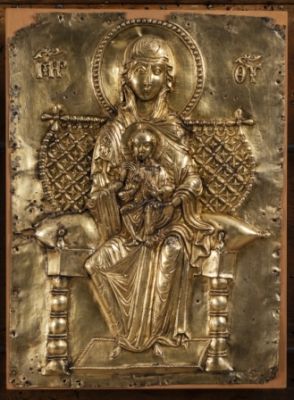
Virgin Enthroned with Blessing Child, first half of the thirteenth century. Panel part of the golden altarpiece of the Basilica of Torcello
Medieval and Modern Section
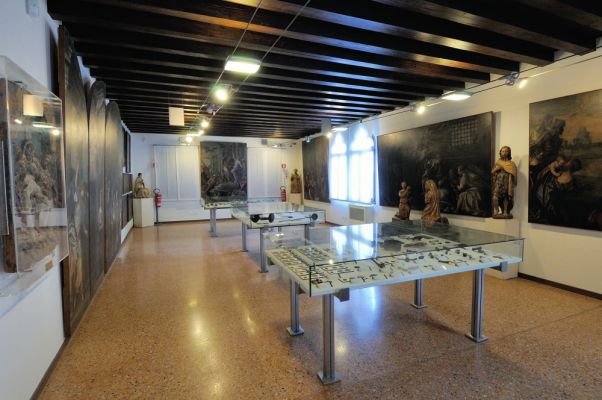
Exhibition Hall, overview
Medieval and Modern Section
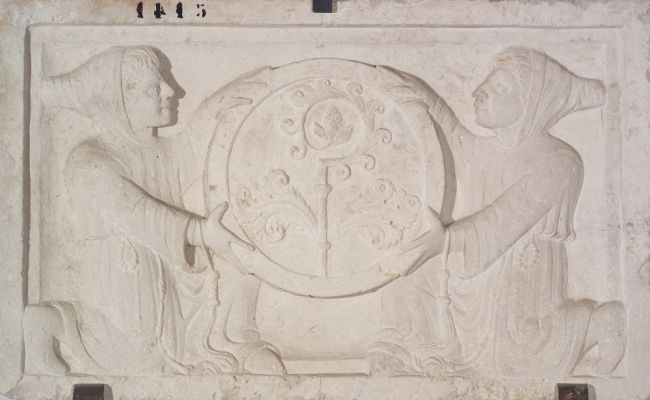
Bas-relief in Istrian stone, perhaps insignia of the Scuola Grande di San Giovanni Evangelista, 15th C.
Medieval and Modern Section
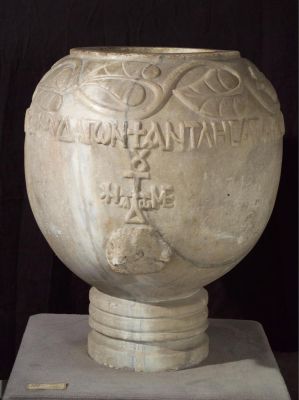
Marble stoup with inscription in Greek letters, second half of the sixth century
Medieval and Modern Section
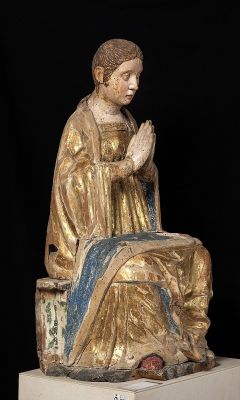
Virgin Praying, polychrome wooden sculpture, end of XV century
Medieval and Modern Section
Torcello Museum
Torcello Museum tells the story of an island which was already a point of arrival and place of trade between the sea and hinterland as early as the1st century AD, a sort of early port for the Roman city of Altino, connected to the most important ancient road links with eastern and northern Europe: the Via Annia and the Via Claudia Augusta. Inhabited, with port and trading facilities and integrated into the economic system of the Roman Empire, Torcello expanded further during the centuries of the invasions and formation of the Roman‑Barbarian kingdoms, it offered the mainland population a safe place to live and form a larger community which reached its maximum size in the 10th century. Torcello was thus the lagoon city, before Rialto and Venice, a flourishing place dedicated to trade.
The history of Torcello Museum began in 1870 when Luigi Torelli, the prefect of Venice, purchased the Palazzo del Consiglio to house archaeological artifacts found out in Torcello, in the adjacent islands and in the near mainland. In 1872 the Museum was founded with the donation of the property to the Province of Venice and the direction of the researcher Nicolò Battaglini. In 1887 Cesare Augusto Levi took his place, continuing the collection of findings discovered on the spot and the surroundings and adding others gathered during his travels, especially in Rome. In 1887 Levi bought the Palazzo dell’Archivio and after a restoration, he donated it to the provincial authorities with the archaeological collection included. On May 14th, 1889 the museum was inaugurated.
Under the direction of Luigi Conton (1909), Adolfo Callegari (1948) and Giulia Fogolari (1949) the collections were rearranged and reorganized in the two present sections: the medieval and modern section in the Palazzo del Consiglio and the archaeological section in the Palazzo dell’Archivio. In the following years, the Province of Venice – now The Metropolitan City of Venice – restored the two buildings and was responsible for the cataloguing and the scientific study of the museum heritage, in cooperation with the Ministry of Culture, The University Ca’ Foscari and the Veneto Region.
The Museum houses two permanent sections, the Archaeological and the Medieval and Modern. The permanent displays present finds that testify to the intense trade involving the lagoon and its inhabitants starting from the Mycenaean period (2nd millennium B.C.), and gather various material from the early-Veneto, pre-Roman, Roman, Byzantine, and early medieval periods. The glorious days of the Serenissima are given ample testimony up till the 19th century.
The Archive Building and the archeological section
The Archive Building housed the archive of the island that were only transferred to the Venetian State Archives in 1818 when the Diocese of Torcello was suppressed.
The original structure, characterized by the loggia on the ground floor and the three mullioned venetian byzantine windows on the first floor, was built in the 12th century but later underwent various partial demolitions and reconstruction.
In 1887 Cesare Augusto Levi bought and restored the building (used as stable and grain storage at the time). He conserved the façade but change everything else and put two venetian columns in to support the mezzanine.
The collection in the archaeological section offers a far‑reaching chronological journey illustrated by a rich panorama of objects and works embracing the Greek, Etruscan, Central Italic, Paleoveneto and Roman cultures and setting the lagoon area in the historical context of the Mediterranean basin. The display consists partly of artefacts found on Torcello,in the lagoon and on the mainland near Altino and partly of objects from other contexts, purchased on the antiques markets or coming from donations.
The archaeological section, contains archaeological finds dating from the prehistoric to the Paleochristian periods, with artifacts of different origin, from the Greek, Italic, Etruscan and Roman ceramics in their varied decorative styles and manufacturing techniques to pre-historic Etruscan bronzes used as votive objects, tableware, utensils, votive and funerary figures of worship discovered in the area around Altino, brooches and mirrors for personal and ornamental use, some of which are of certain local manufacture.
The Roman finds are represented by sacred bronze statuettes, busts, heads of divinities and worshippers, animals, decorated tablets, Roman ceramics of differing types and manufacture. There are kitchen-table ware for funeral use and glasses and goblets from the UpperAdriatic; There are various types of terracotta oil lamps: circular, matrix, decorated with religious designs, private motifs, with images of circus games, animals and plants.
Council Building
The 4th century Gothic Palazzo del Consiglio (Council Building) was where Torcello’s council met, it was made up between 20 to 40 Torcello nobles (according to the period) who were register in the Golden Book.
The only remaining parts of the original structure are the external staircase, the mullioned windows, some section of the masonry and the little bell tower. The sound of the bell would gather the citizenry and company of artist on the square. There was also a clock on the tower, its mechanism is kept in storage at the museum.
The building, now no longer used for agriculture, was bought in 1870 by count Luigi Torelli (previously Prefect of Venice) to house the finds and artwork of the island and surrounding, including the mainland and the lagoon.
The restoration financed by Torelli involved the ground floor, and introduced some division in the first floor – previously made up of one room – to facilitate exhibition.
In the 1872 the building was given by Torelli to the Venetian provincial government who made it into a museum.
Today the Palazzo del Consiglio houses the Museo’s Medieval and modern section
The Mediaeval and Modern section exhibits works and documents, dating from the early centuries of the Christian era to the 19th century, as to follow the history of the island of Torcello and its relationship with the altinate area, with Byzantine culture and the city of Venice. The exhibition follows a chrono-typological path.
The Medieval and Modern Section, contains objects and documents from the first centuries of the Christian era until the 19th cent. A.D.. Stoneworks and architectural fragments dating back to the Early Middle Ages witness the Bizantine influence in the lagoon area and the progressive fitting to Western decorative patterns with their braids, wavy-designed frames, geometric interlaces with stylized flowers or more complex motifs of animals and plants.
The mosaic fragments of the 12th cent. A.D with the Head of Christ and the Angels in the Basilica of Santa Maria Assunta before the restoration of the 19th century. The golden silver Pala d’Altare of the 13th century also come from there.
The Section also contains paintings from the ruined church of Sant’Antonio at Torcello, attributed to the workshop of Paolo Caliari, known as Veronese. Of Venetian manufacture are the wooden polychrome sculpture of the half of the 15th century representing the Pietà, and Santa Fosca, whose body was buried in the church of the same name in Torcello.
The intense social life that used to be in Torcello is confirmed by documents, seals and pottery collection relating the civil and ecclesiastic life in the island.

Exhibition Hall, overview
Archaeological Section

Pair of enthroned female figures Demeter and Kore (fragmentary), 4th century B.C.
Archaeological Section

Portrait of a young man with thick curly hair (youthful portrait of Marcus Aurelius?), mid-second century AD
Archaeological Section

Greek pottery and black glaze
Showcase n. 3, Archaeological Section

Protohistoric bronzes: armilla (bracelets) and necklaces
Showcase n. 5, Archaeological Section

Apulian vases and Campanian red-figure vases, late 4th-early 3rd Century BC
Showcase n. 6, Archaeological Section

Roman common pottery: olla and glass
Showcase n.8, Archaeological Section

Roman iron keys
Showcase n. 9, Archaeological Section

Roman bronzes: amulets, fibulae, small tools, tableware
Showcase n.10, Archaeological Section

Oil lamp stands decorated with female figures in relief, mid 1st-2nd century AD
Archaeological Section

Carved agate with kneeling warrior with armor and shield, 2nd-1st century BC. Probably used as a seal
Archaeological Section

African oil lamps VI century AD and ampullae of San Menas V-VI century AD
Archaeological Section

Veiled female head in terracotta, III-II century B.C.
Archaeological Section

Ivory pyx depicting two cupids placed back to back
Archaeological Section

Roman bronzes: jug I-II century AD and glass
Archaeological Section

Mesocorinthian krater vase with columns with battle scenes between warriors armed with spear and shield and animals in the lower band, 590 - 575 BC
Archaeological Section

Mycenaean amphora with stirrup handle 1300-1230 B.C.
Archaeological Section

Attic red-figure vases: two Pelike and pyxis lid, late 5th-mid 4th century BC.
Archaeological Section

Apulian vases of geometric style: jug, late 4th century BC and trozzella, late 4th-early 3rd century BC
Archaeological Section

Head female portrait with hairstyle of three rows of spiral curls, 1st century AD Roman sculpture
Archaeological Section

Lion of St. Mark with the coat of arms of the House of Calbo, 15th century (?)
Exterior on the back wall between the Archives building and the Council building

Saint Bartholomew, bas-relief of the 15th C.
Exterior of the room under the stairs of the Palazzo dell'Archivio

Cubic marble well, 8th century, detail of the carved motif on the four sides: Greek cross with expanded ends

Saint John the Evangelist, high relief end of the 14th century (?), from the facade of the church of the same name in Torcello
Exterior, at the foot of the stairs of the Archives building

Coats of arms of Venetian families, Marcian lions and Sant'Andrea
Exterior on the back wall between the Palazzo dell'Archivio and the Palazzo del Consiglio

Bowls (fragment of foot with basin) in engobe slipped and scratched ceramic, Venetian production 16th C.
Medieval and Modern Section

Upper room showcase with relics from Torcello, leaden bubbles, seals
Medieval and Modern Section

Head of an angel, fragment of mosaic from the apse area of the Torcello Basilica, late 12th C.
Medieval and Modern Section

Saint Anne Enthroned with the Virgin, wooden sculpture second half of the XIV century (?)
Medieval and Modern Section

Roman honorary base with inscription, adapted to a well and decorated with griffins on the opposite side in the X century
Medieval and Modern Section

Detail of a fragment of a pluteo with a thin ribbon (lemniscus) ending in an animal head
Medieval and Modern Section

Virgin Enthroned with Blessing Child, first half of the thirteenth century. Panel part of the golden altarpiece of the Basilica of Torcello
Medieval and Modern Section

Exhibition Hall, overview
Medieval and Modern Section

Bas-relief in Istrian stone, perhaps insignia of the Scuola Grande di San Giovanni Evangelista, 15th C.
Medieval and Modern Section

Marble stoup with inscription in Greek letters, second half of the sixth century
Medieval and Modern Section





